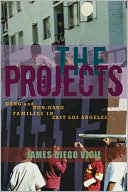The Projects: Gang and Non-Gang Families in East Los Angeles
Search in google:
The Pico Gardens housing development in East Los Angeles has a high percentage of resident families with a history of persistent poverty, gang involvement, and crime. In some families, members of three generations have belonged to gangs. Many other Pico Gardens families, however, have managed to avoid the cycle of gang involvement.In this work, Vigil adds to the tradition of poverty research and elaborates on the association of family dynamics and gang membership. The main objective of his research was to discover what factors make some families more vulnerable to gang membership, and why gang resistance was evidenced in similarly situated non-gang-involved families. Providing rich, in-depth interviews and observations, Vigil examines the wide variations in income and social capital that exist among the ostensibly poor, mostly Mexican American residents. Vigil documents how families connect and interact with social agencies in greater East Los Angeles to help chart the routines and rhythms of the lives of public housing residents. He presents family life histories to augment and provide texture to the quantitative information.By studying life in Pico Gardens, Vigil feels we can better understand how human agency interacts with structural factors to produce the reality that families living in all public housing developments must contend with daily.
Foreword Thomas S. Weisner ixPreface xiiiIntroduction 1Rationale and Methods 20A History of the Cuatro Flats Barrio Gang 39The Gang Subculture: Change and Continuity 54The Pico Gardens Clique 71A Gang Life 94Cholas in the World of Gangs 106Why Children Either Avoid or Affiliate with Gangs 126Families Not Involved with Gangs 141A Closer Look at Gang-Affiliated Families 158Gang Prevention and Intervention Strategies over Time 177Conclusion and Recommendations 195References 213Index 227








